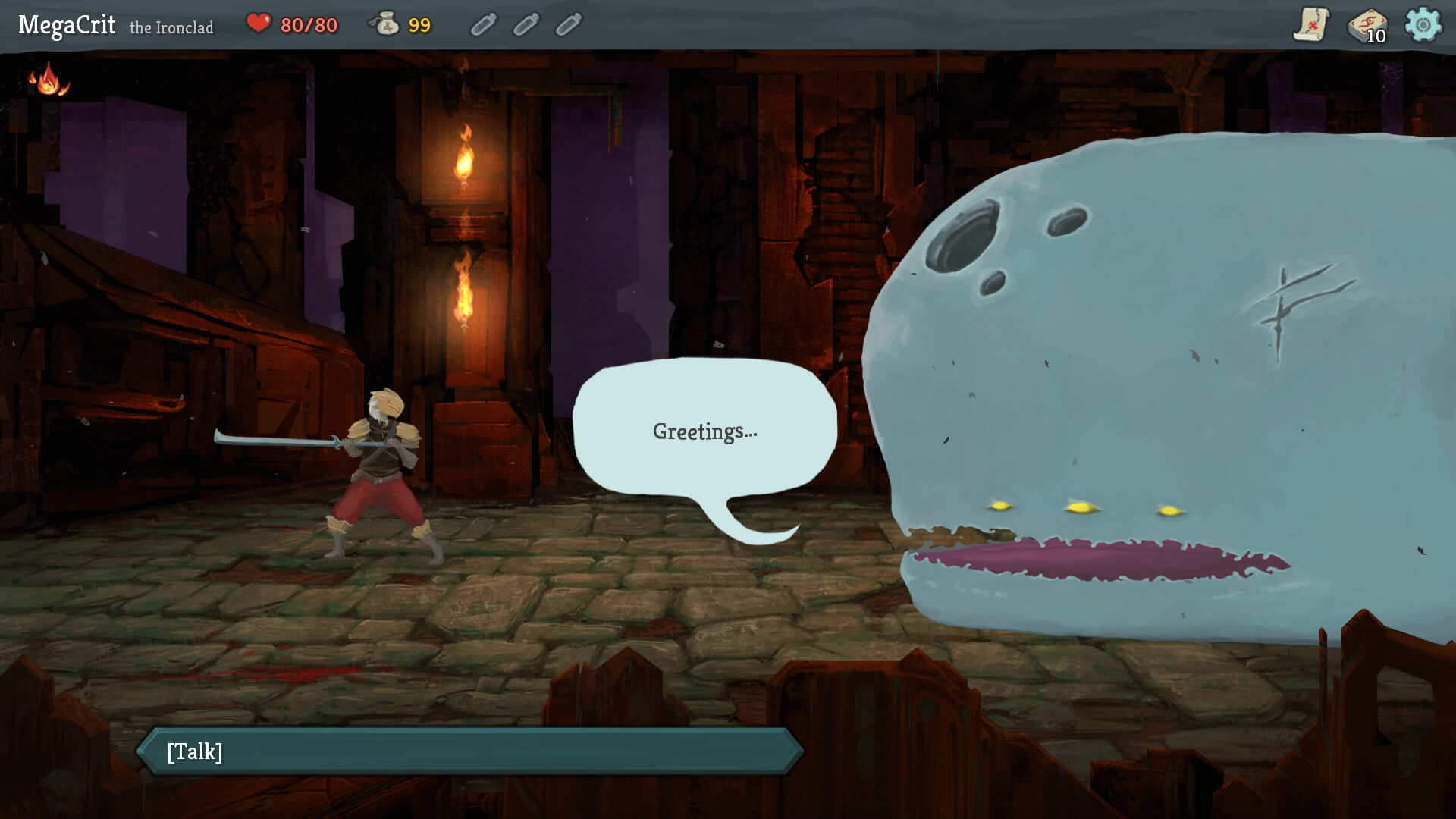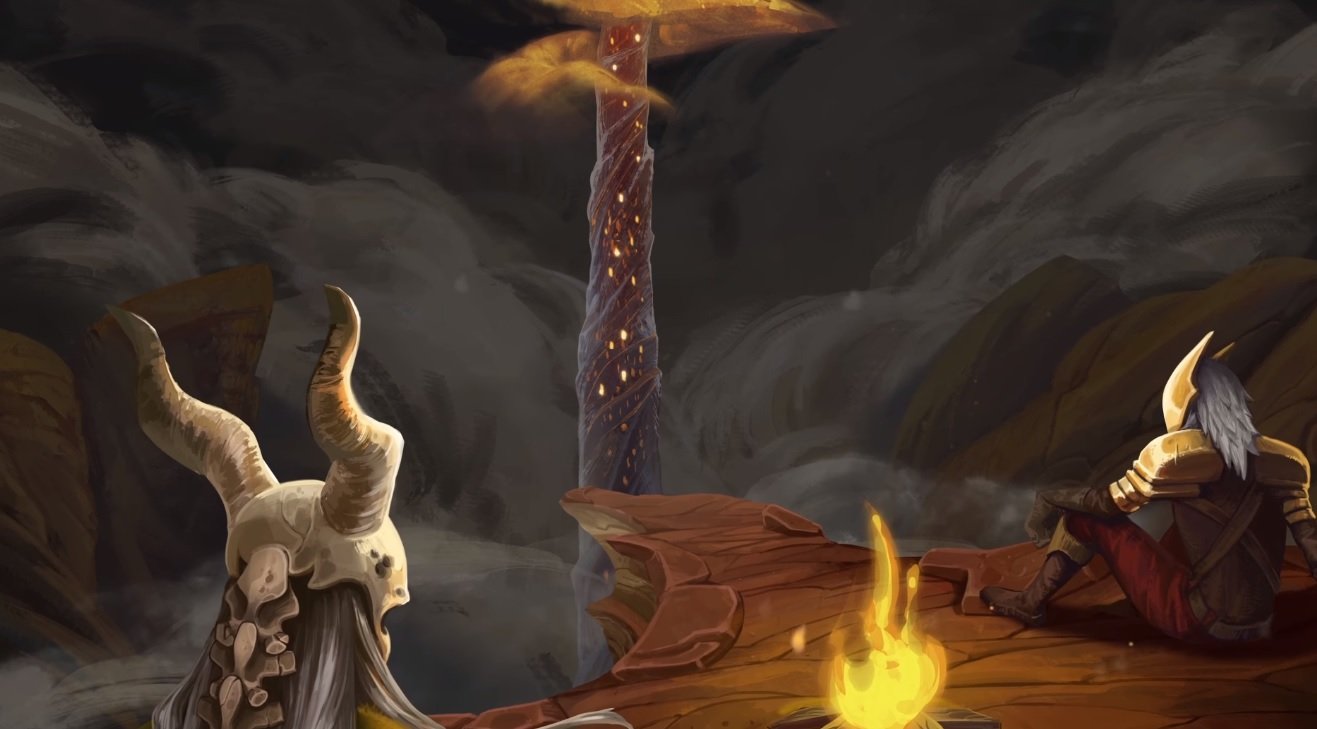
I’ve been playing Slay the Spire for a long time; like back in Early Access, when this game was still using its beta art, and when the Ironclad and the Silent were the only two characters. We’ve come a long way since then, and yet I continue to be drawn to this game like almost no other I’ve played. I could wax lyrical about its mechanics, or its delicate sense of balance, but I want to focus on an aspect of the game that it spends the least time on itself – the characters. From the very start of a run, you get to choose your character (like in the image I’ve shown above), and it feels like a truly epic choice. There are these glorious colors, and you get a little snippet of information about your choice. In the case of the Ironclad, we are told that he is the last remaining soldier, and he can harness demonic energies. You feel excited, you feel pumped. You feel like a true glorious warrior who is ready to Slay the Spire. And then you embark on your journey and you are greeted with a scene that would not feel out place in a Terry Pratchett novel:

When I think of Rogue-likes, while permadeath with nothing carrying over would definitely be high up on their list of characteristics, to me a game of this genre is most defined by how I can customize my run, and how it changes my experience. Slay the Spire offers that in buckets and spades, with many cards enabling other cards with synergies, or relics allowing for cards I previously thought useless to shine, or even anti-synergies that I know to watch out for in future runs. But how does Slay the Spire’s previously mentioned lack of character enable me to enjoy the customizability of runs even more? It’s because I’m no longer constrained by the character’s backstory, or what their future entails. All that matters is the moment, and what I bring to the table. I don’t have to think about whether this would be in the characters motivations to act this way. No internal cries of “Oh the Ironclad wouldn’t just remove his strikes” “Oh the Silent wouldn’t just throw blade after blade at an enemy”. Instead my Ironclad is a man who just wanted to create the best armor in the world and that’s why I love creating so much block and being content just defending against attacks.
Slay the Spire’s very lack of a given reason for you to be ascending the spire only plays into the versatility present in the game – I make my own reasons, and I tell my own stories. At the end of the day, perhaps the real Slay the Spire story were the characters and stories I made along the way.


While its true that lore and narrative and story are some of the many things that make a game fun to play and give you a reason to open it up, I really do appreciate how Slay the Spire fully immerses you in the world with the sense of mystery that it provides by not giving any reason for your actions. As you noted, the game does make you feel like a warrior going through trials and tribulations to get to an end-goal of slaying the spire. Why? Doesn’t really matter! When I played, although I died time and time again, I kept going each time wondering if I would learn more about the world, about the spire, about the characters. Slowly but surely, I realized that the point of Slay the Spire is not to create a complex narrative exploring this labyrinth and wondering why the enemies are attacking you and why I have been thrown in to kill all these creatures. The mysterious aspect of the game only makes you want to play more, as each run gives you new rewards and new reasons to play. We create our own meaning, not due to some fault on the developer’s part for not fully creating a world and a reason to be in the world, but perhaps to show us that not everything needs some intrinsic meaning and lore beyond giving players a way to suspend their disbelief for as many hours as they can, creating their own meaning and character lore in the process.
Hello!
I really enjoyed reading your post, I also played Slay the Spire and would say I enjoyed the lack of lore. The gameplay itself is very addicting, I often found myself making excuses to play in between assignments and other day-to-day tasks. In the past, I have played deck-building and mobile games that try to inject a story into games where the story contributes so little to their enjoyment and ultimately detracts from the overall experience. In those games, I just skip through the story anyways and Slay the Spire saves the player the effort while still providing incentives for players to continue with its “unlock” features for both cards and characters.